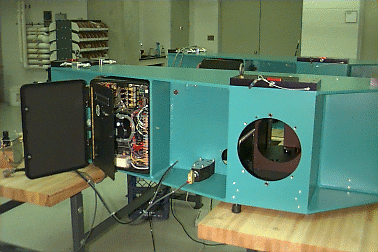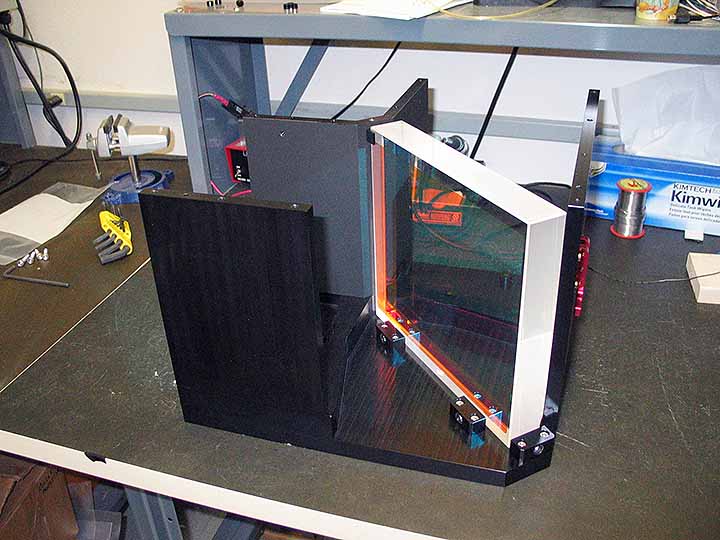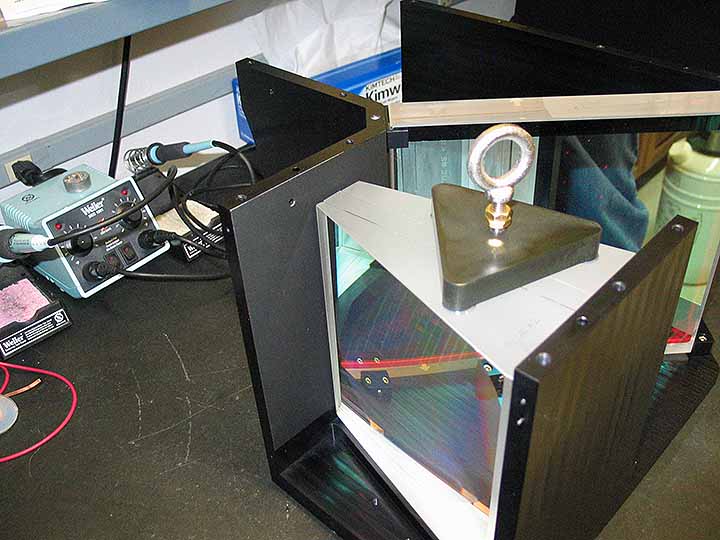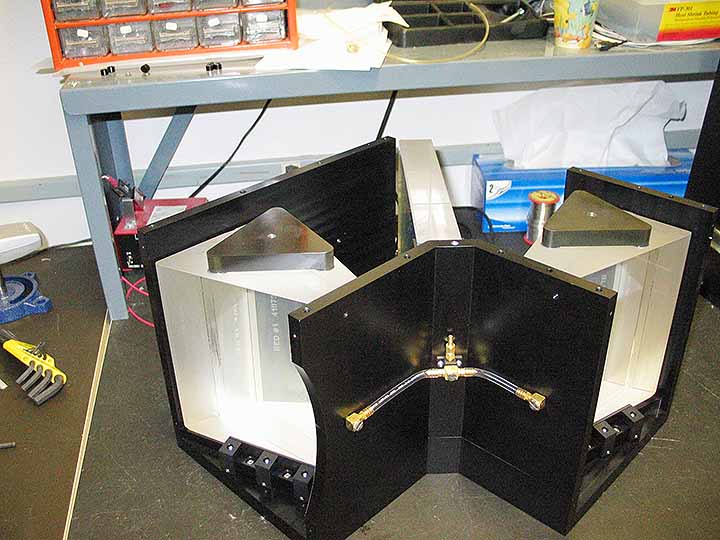The two identical BOSS spectrographs were rebuilt from the original SDSS spectrographs. Each spectrograph has two cameras, one red and one blue, with a dichroic splitting the light at roughly 6000 Angstroms. The BOSS spectrographs were custom designed for BOSS, an SDSS-III spectroscopic survey that measured redshifts of 1.5 million luminous red galaxies and Lyman-alpha absorption towards 160,000 high redshift quasars. BOSS remains the active optical spectrograph in SDSS and it was used to collect all MaNGA and eBOSS data released during SDSS-IV, and the two BOSS spectrographs continue to be used in SDSS-V as the primary instruments for the Black Hole Mapper (BHM), but also often as among the instruments of choice for Milky Way Mapper (MWM).
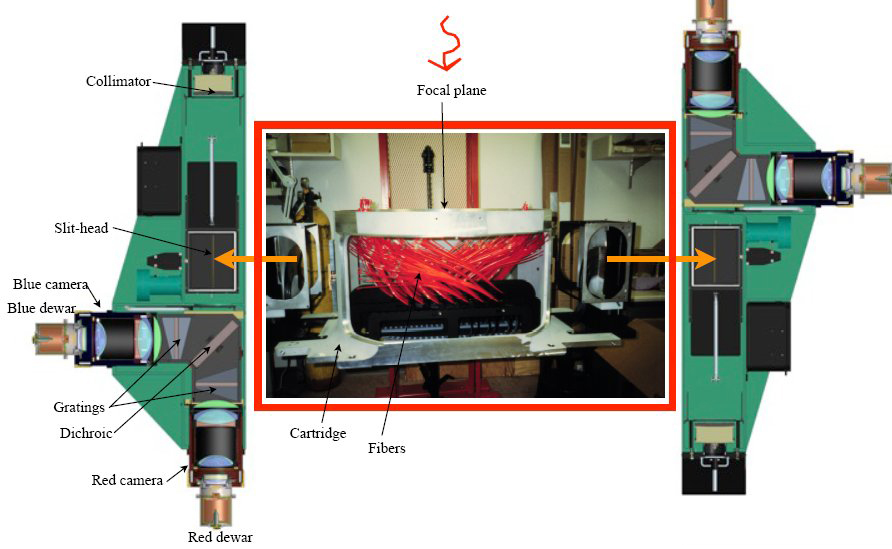
In SDSS-V, one of (these two) BOSS spectrographs remained on the Sloan Telescope at Apache Point Observatory (APO) in New Mexico to continue to cover the Northern sky with optical multi-object spectroscopy (MOS), while the second BOSS spectrograph was moved to the DuPont Telescope at Las Campanas Observatory (LCO) in Chile to bring analogous MOS optical coverage to the Southern sky for the first time in SDSS. Each BOSS spectrograph in SDSS-V (i.e., with one located at APO in the Northern Hemisphere, and the other at LCO in the Southern Hemisphere) permits taking up to 500 BOSS optical spectra at a time (in each field, North and South).
Though SDSS-V initially started using BOSS with the traditional plate system at APO, within about the first year of SDSS-V operations BOSS observations from both the North/APO and South/LCO were upgraded to instead rely on the rapidly reconfigurable 500-fiber each robots of the Focal Plane System (FPS).
Principal Upgrades from the Original
- New, higher efficiency volume holographic gratings.
- Fully-depleted CCDs on the red side, with much better red response, as well as blue CCDs with improved blue response.
- Larger numbers of fibers (500 per spectrograph rather than the earlier 320 per spectrograph), and with smaller holes (e.g., 2″ rather than 3″ at APO).
- In SDSS-V, ultimate replacement of plates by the robotic FPS (and with FPS and one BOSS spectrograph at each of APO and LCO).
In SDSS-IV (and early in SDSS-V) the blue camera provides a passband of about 3600-6350 Angstroms, with that blue limit set in earlier phases of SDSS to include the wavelength-calibration Cd I arc line at 3610.51 Angstroms. In SDSS-IV (and early in SDSS-V) the red cameras cover at least 5650-10000 Angstroms, with that red limit set by detection of the Mg b 5175 A and the Na D 5893 A absorption features redshifted to z = 0.7. In SDSS-V, the anticipated full combined passband coverage is anticipated to be similar at about 3650-9500A.
The main scientific goals of BOSS and eBOSS in earlier phases on SDSS, and extending now to BHM/MWM in SDSS-V, could be achieved using a range of modest spectroscopic resolution. The adopted design has a resolution running from about R = 1560 at 3700 Angstroms to R= 2270 at 6000 Angstroms (blue channel), and from R = 1850 at 6000 Angstroms to R = 2650 at 9000 Angstroms (reds channel). The higher resolution and the extended red wavelength coverage is useful to capture the Lyman-alpha break and the strongest Mg lines redshifted to about 9300 Angstroms.
For details of how the spectrograph was used to collect MaNGA data in SDSS-IV, please see the MaNGA Fiber Feed page. For the earlier BOSS and eBOSS programs, 1,000 holes were drilled in an aluminum plate (a plug plate, which subtends 3 degrees on the sky), each hole corresponding to an astronomical object such as a quasar, a galaxy, a standard star, or a random blank area on the sky (to measure and subtract the foreground sky emission). The plug plate was then mounted on a cartridge that can be quickly affixed to the telescope. 1,000 optical fibers with 2 arcsec diameters were plugged into the holes. The fibers send the light from each object through a beamsplitter with a coating that reflects the blue part of the spectrum while allowing the red part through. Each spectrum is thus split into two parts, blue and red, and the two parts are recorded on separate CCDs. The red spectrograph uses thick, fully depleted 4Kx4K LBNL CCDs that have a high quantum efficiency in the near-infrared and much reduced fringing. The blue side has blue-sensitive e2v CCDs (CCD231-84).
When analyzing spectra in SDSS optical data, remember that the SDSS wavelength scale is based on vacuum wavelengths.
Highlights
Main Parameter Summary
- Number of spectrographs
- 2 (in SDSS-V, one each at APO and LCO)
- Spectral resolution
- 1560-2270 in the blue channel, 1850-2650 in the red channel
- Wavelength coverage
- 3600-10,400 Angstroms maximum (with 3650-9500 Angstroms with good throughput in SDSS-V)
- Fiber diameter
- 2 arcsec (APO)
- CCDs
- 4Kx4K fully-depleted LBNL CCDs with 15 micron pixels for the red side, blue-sensitive 4Kx4K e2V CCDs with 15 micron pixels for the blue side
- Collimator coating reflectivity
- >95% from 420 nm to 1000 nm
Instrument Pictures
